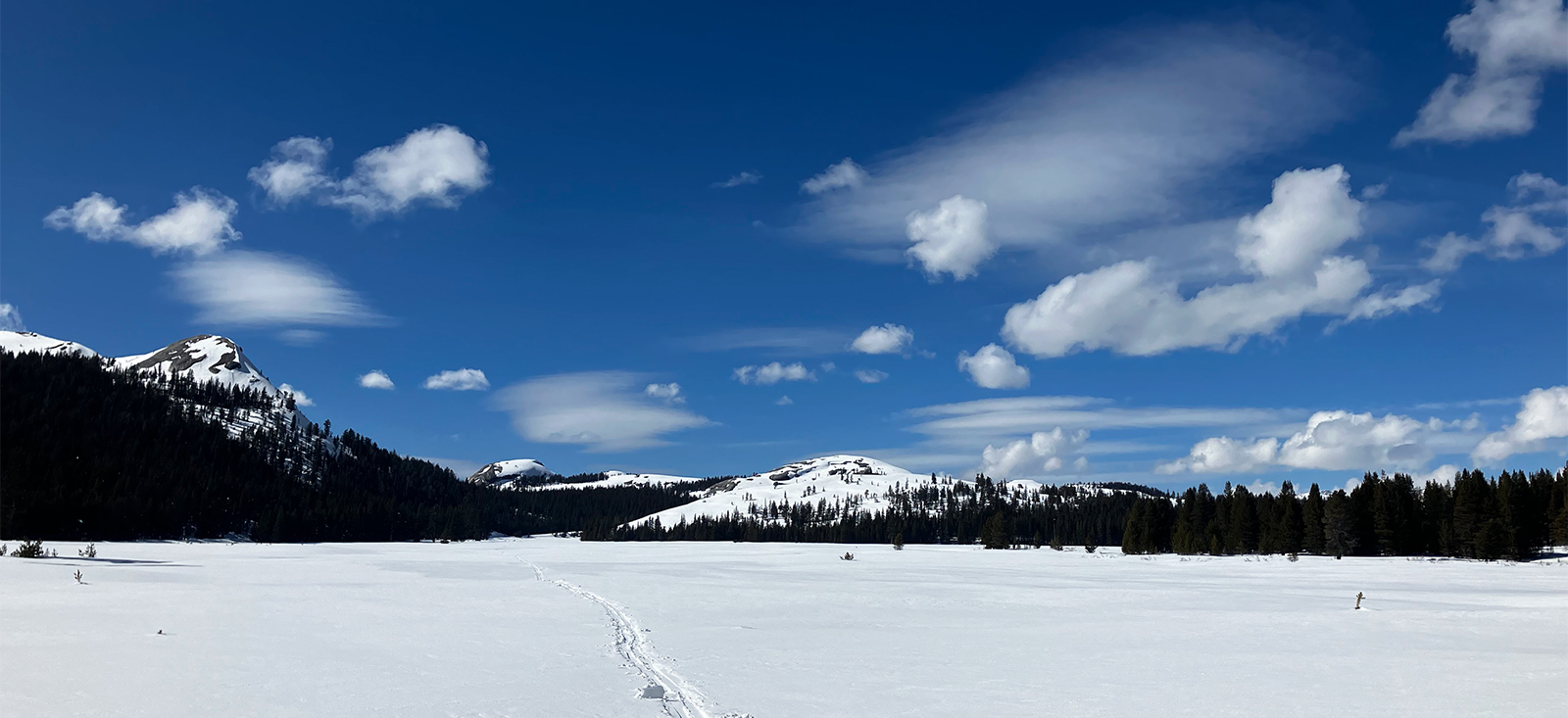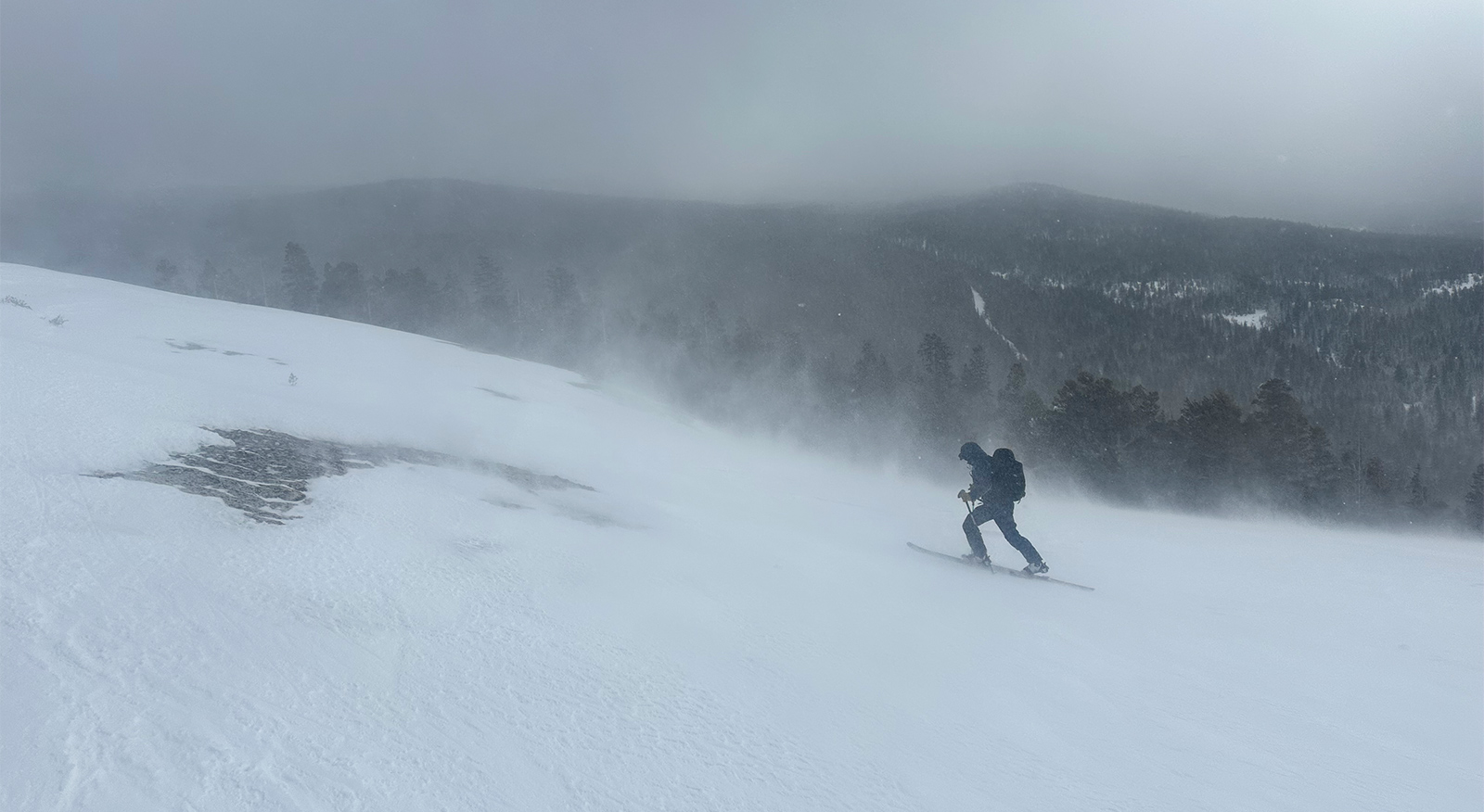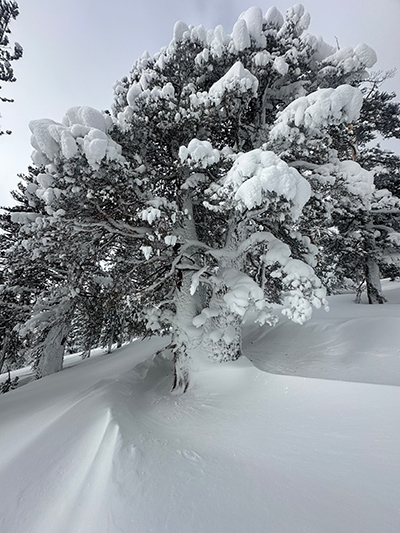New Snow: 47 inches
Settled Snow Depth: 72 inches
High Temperature: 45°F (February 28)
Low Temperature: 0°F (March 4)
February Weather Summary
New Snow: 94 inches (historical average 62.1 inches)
Snow Water Equivalent (SWE): 6.44 inches (historical average 4.53 inches)
Average High Temperature: 36.1°F (historical average 40.2°F)
Average Low Temperature: 9.65°F (historical average 10.3°F)
Average Temperature: 22.87°F (historical average 25.2°F)

Ski Conditions and Weather
March came in like a roaring lion with blizzard conditions across the Sierra Nevada for the first three days of the month. Even by Sierra Nevada standards, March 1 through 3 were likely the highest sustained winds that we have observed in our time here as the winter rangers. We also measured 47 inches of new snow and 3.15 inches of SWE at our weather plot here in Tuolumne Meadows during the storm. Despite all that wind, the snow had to land somewhere, right? We have found the best skiing post storm to be in the shelter of the trees. It will take a few days for the new snow to settle and allow for easier trail breaking and faster travel.

The March 1 snow surveys are now complete across Yosemite National Park. The Tuolumne drainage was 73% of the April 1 average. This data was obtained prior to the significant storm.
Avalanche and Snowpack Conditions
Please refer to the Eastern Sierra Avalanche Center (ESAC) and the Bridgeport Avalanche Center for the avalanche advisories for this part of the Sierra Nevada.
One might think that 47 inches of new snow has the landscape blanketed in deep snow. The extreme winds, however, had a notion to strip the existing snow from slopes, and deposit this and the new snow in atypical places. Our backyard ski run literally has an “addition” in that the wind-blown snow pushed out the existing snow slope to the east and added some acres of new skiing! The price to pay, of course, was that the slope we typically ski to the west of there was stripped back to bare ground. So it goes in the windy Sierra Nevada.
Avalanche hazard after such a wind event is dictated by wind slab formation. We observed a wind slab avalanche on a steep, east-facing granite slope above Tuolumne Meadows that occurred naturally on the night of March 3 (after three days of the wind event).

History of Snow Surveys
With weather like we had last week, it is no wonder that at some point somebody proposed doing snow surveys “by airplane” between storms. But that Aerial Marker Snow Depth program was short-lived (1953-1974). The pilots would fly over large, calibrated metal posts while a passenger snapped a quick photo of the snow depth. Sure, they managed to avoid trail-breaking, frostbite, avalanches and good ol’ character building, but it was still super risky work. “A really bold observer would wedge [themselves] into…” the nose cone of (most commonly) a twin-engine P-38 World War II fighter plane” (Rose 169). In the end, they still lacked the most crucial data: SWE (Snow Water Equivalent). As any good skier knows, the lighter the shovel-load the better the face-shot, but the heavier the shovel-load, the better for the snowbank, California’s white gold. This week we got a little of both!
Wildlife
At Snow Flat the woodpeckers were drumming and spring was in the air. Golden crowned kinglets chattered among the firs. We heard the first mating calls of the mountain chickadee and brown creeper. Then, only the sound of wind. Lots of wind. Now that the tempest has passed, critters such as long-tailed weasel and pine martens are getting face shots in the meadow. Townsend’s solitaire, red-breasted nuthatch, Clark’s nutcracker, common raven and flocks of American robin, cedar waxwing and red-crossbills are back to their usual antics acting as if nothing ever happened. Just another day in paradise.

Questions
The Tuolumne Meadows Ski Hut is open. This primitive cabin is the campground reservation office in the summer and is located along the Tioga Road at the entrance to the campground. It is marked with a sign. There is firewood and 8 bunks that are available on a first-come, first-served basis. For those visiting the Tuolumne Meadows Ski Hut from the east (only) permits are self-issued at the Ski Hut. For those entering from other areas, please see Yosemite’s website: https://www.nps.gov/yose/planyourvisit/wildfaq.htm#winter or you may contact the wilderness office at 209/372-0740. As of this writing, there is electricity and limited phone service in Tuolumne Meadows.
Come prepared, and please make good decisions while traveling in the wilderness!
Read through the following three pages before embarking on any day or overnight snow travel within this park:
You may contact us with any additional winter Tuolumne Meadows related questions but response times may vary if we are away on patrol.
References
Rose, Gene. Snow Warriors: The Heroic Trail of the Early Snow Surveyors. Gene Rose, 2022.
Happy Skiing!
Laura and Rob Pilewski - Tuolumne Meadows winter rangers
